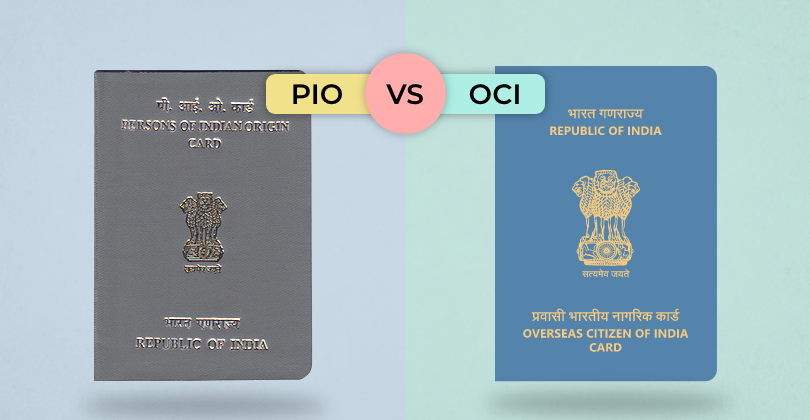Are you of Indian origin and living abroad? You've probably come across terms like PIO and OCI. These cards offer different benefits, but it can
The financial landscape is changing quickly in today's digital age in ways that have never been seen before. The manner in which people and businesses acquire credit has changed as a result of the significant influence of online borrowing. To ensure fairness, transparency, and security in the digital lending ecosystem, there is a need for clearly defined norms and regulations.
This article goes into the world of digital lending regulations, examining what they are, why they matter, and how they will affect borrowing in the future.
What is Digital Lending?
Digital lending, often called online lending or FinTech lending, has witnessed significant growth in recent years. It leverages technology and data analytics to streamline the lending process, making it faster, more convenient, and accessible to a broader audience. From Peer-to-Peer (P2P) lending platforms to online personal loan providers and small business lenders, digital lending encompasses a wide array of financial services.
The key drivers behind the digital lending revolution include:
-
Convenience: Borrowers can apply for loans from the comfort of their homes using their smartphones or computers. The application process is often quick and hassle-free.
-
Speed: Digital lenders employ advanced algorithms and automation to assess loan applications swiftly, reducing the time it takes to approve them and disburse funding.
-
Inclusivity: Digital lending has expanded access to credit, reaching underserved populations that may have been excluded from traditional banking systems.
-
Data-Driven Decision-Making: FinTech lenders rely on a wealth of data sources, including social media activity, transaction history, and alternative credit scoring models, to assess creditworthiness.
-
Customisation: Borrowers can often choose from a variety of loan products tailored to their specific needs and financial situations.
Though worries about consumer safety, ethical lending standards, and the possibility of predatory behaviour have been raised in light of the rapid expansion of digital lending, governments and regulatory organisations from all around the world have created rules for online lending to address these issues.
Understanding Digital Lending Guidelines
Digital lending guidelines are a set of rules, regulations, and best practices that govern the operations of online lenders. These guidelines aim to strike a balance between promoting innovation and ensuring consumer protection. While the specifics of these guidelines can vary from one jurisdiction to another, they generally cover several critical areas:
-
Licensing and Registration: Many countries require digital lenders to obtain licences or permits to operate legally. These licences often come with specific conditions, such as minimum capital requirements and reporting obligations.
-
Interest Rate Caps: To prevent usurious lending practices, digital lending guidelines may set limits on the maximum interest rates that lenders can charge. These caps are designed to protect borrowers from excessive interest and fees.
-
Transparency: Transparency is a cornerstone of digital lending guidelines. Lenders are typically required to provide clear and comprehensive information about loan terms, fees, and repayment schedules to borrowers. This ensures that borrowers fully understand the financial commitment they are entering into.
-
Data Privacy: With the collection and use of sensitive personal and financial data, digital lenders are often subject to strict data protection regulations. These guidelines dictate how borrower data should be handled, stored, and protected.
-
Fair Lending Practices: To prevent discrimination and promote fair access to credit, digital lending guidelines often require lenders to implement non-discriminatory lending practices. This means that loan approval decisions should not be based on factors such as race, gender, or religion.
-
Collection and Debt Recovery: Guidelines also address the procedures lenders should follow in cases of default and debt collection. These rules aim to protect borrowers from aggressive or unethical collection practices.
-
Risk Management: To ensure the stability of the financial system, digital lenders are often required to have robust risk management practices in place. This includes stress testing, capital adequacy assessments, and provisions for loan losses.
-
Complaint Resolution: Borrowers should have access to mechanisms for resolving disputes with lenders. Digital lending guidelines may require lenders to establish complaint resolution processes to address customer grievances.
Why are Digital Lending Guidelines Important?
Digital lending guidelines play a crucial role in the financial ecosystem for several reasons:
-
Consumer Protection: These guidelines safeguard borrowers from predatory lending practices, ensuring they are treated fairly and transparently.
-
Financial Stability: By imposing risk management requirements, guidelines help prevent excessive risk-taking by lenders, reducing the likelihood of financial crises.
-
Market Integrity: Guidelines promote trust in the digital lending market by setting clear standards for ethical behaviour and fair competition.
-
Innovation: While guidelines impose regulatory requirements, they also provide a framework for FinTech innovation to thrive within defined boundaries.
-
Risk Mitigation: Digital lending guidelines help mitigate risks associated with data privacy, cybersecurity, and financial fraud.
Challenges in Implementing Digital Lending Guidelines
While digital lending guidelines are essential for creating a safe and fair lending environment, they are not without challenges. Some of the key hurdles include:
-
Adaptation to Innovation: FinTech innovation often outpaces regulatory adaptation. Regulators must strike a balance between fostering innovation and protecting consumers.
-
Jurisdictional Differences: In a globalised world, digital lenders often operate across borders. Harmonising digital lending guidelines across jurisdictions can be complex.
-
Compliance Costs: Meeting regulatory requirements can be costly, especially for smaller FinTech startups. Striking a balance between compliance and cost-effectiveness is crucial.
-
Technological Challenges: Regulators may struggle to keep up with the rapidly evolving technology used in digital lending, making it challenging to set appropriate guidelines.
-
Consumer Education: Borrowers may not fully understand the terms and conditions of digital loans, even with improved transparency. Education campaigns are essential to empower consumers.
The Future of Digital Lending Guidelines
As digital lending continues to evolve, so will the corresponding guidelines and regulations. The future of digital lending guidelines will probably involve the following trends:
-
Global Cooperation: To address cross-border lending, there may be more emphasis on international cooperation to harmonise guidelines.
-
Advanced Risk Management: In future, regulators might place greater emphasis on risk management practices, including stress testing and capital adequacy assessments, to ensure financial stability.
-
Digital Identity Verification: Improved methods for verifying borrowers' identities might come up in the future to enhance security and reduce fraud, contributing to the reliability of digital lending.
-
Enhanced Data Privacy: With growing concerns about data breaches, guidelines in the future may become a bit stricter regarding the protection of borrower data.
-
Regulatory Sandboxes: Some regions may continue to implement regulatory sandboxes in future, allowing FinTech companies to innovate under regulatory supervision.
-
Artificial Intelligence and Machine Learning Oversight: As artificial intelligence and machine learning become integral to lending decisions, regulators may develop guidelines for responsible AI use in future.
Conclusion
Digital lending has ushered in a new era of borrowing, making credit more accessible and convenient for individuals and businesses alike. However, to ensure the integrity of this rapidly evolving industry and protect consumers, digital lending guidelines are essential.
These guidelines strike a balance between fostering innovation and safeguarding against predatory practices, creating a safer and fairer lending ecosystem for all. As the world continues to embrace digital finance, the role of these guidelines in shaping the future of borrowing cannot be overstated.
AUTHOR
KreditBee As a market leader in the Fintech industry, we strive to bring you the best information to help you manage finances better. These blogs aim to make complicated monetary matters a whole lot simpler.







